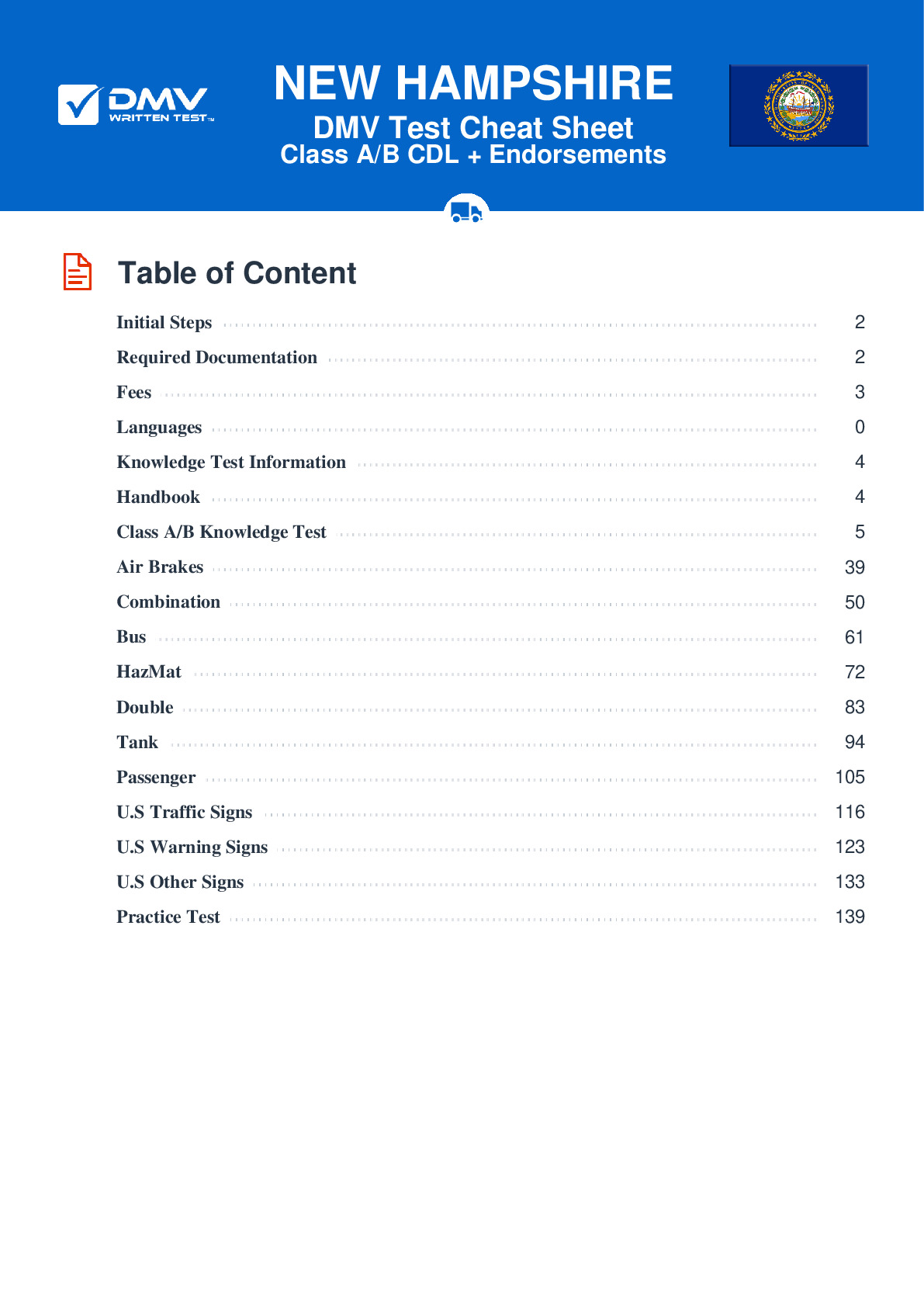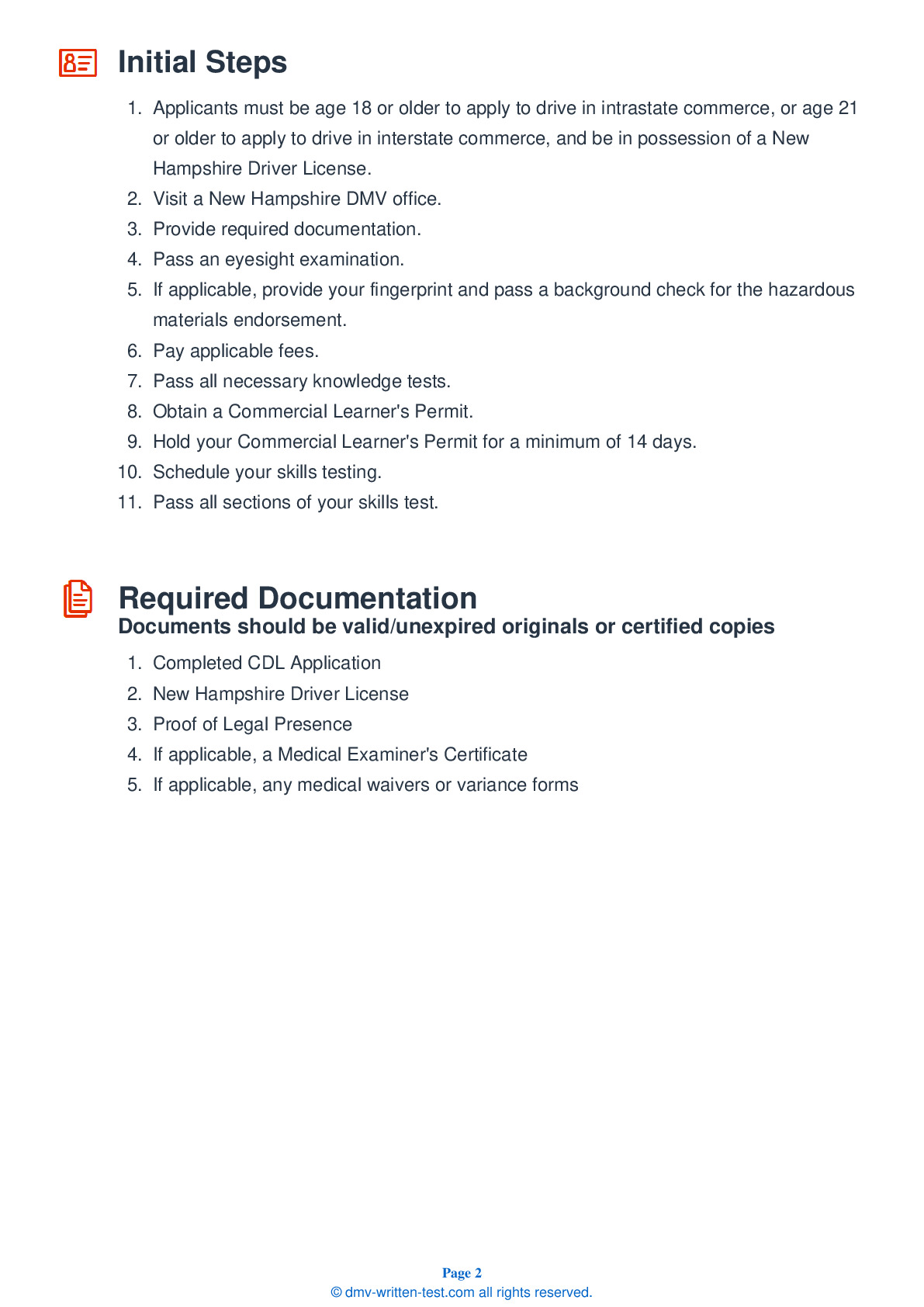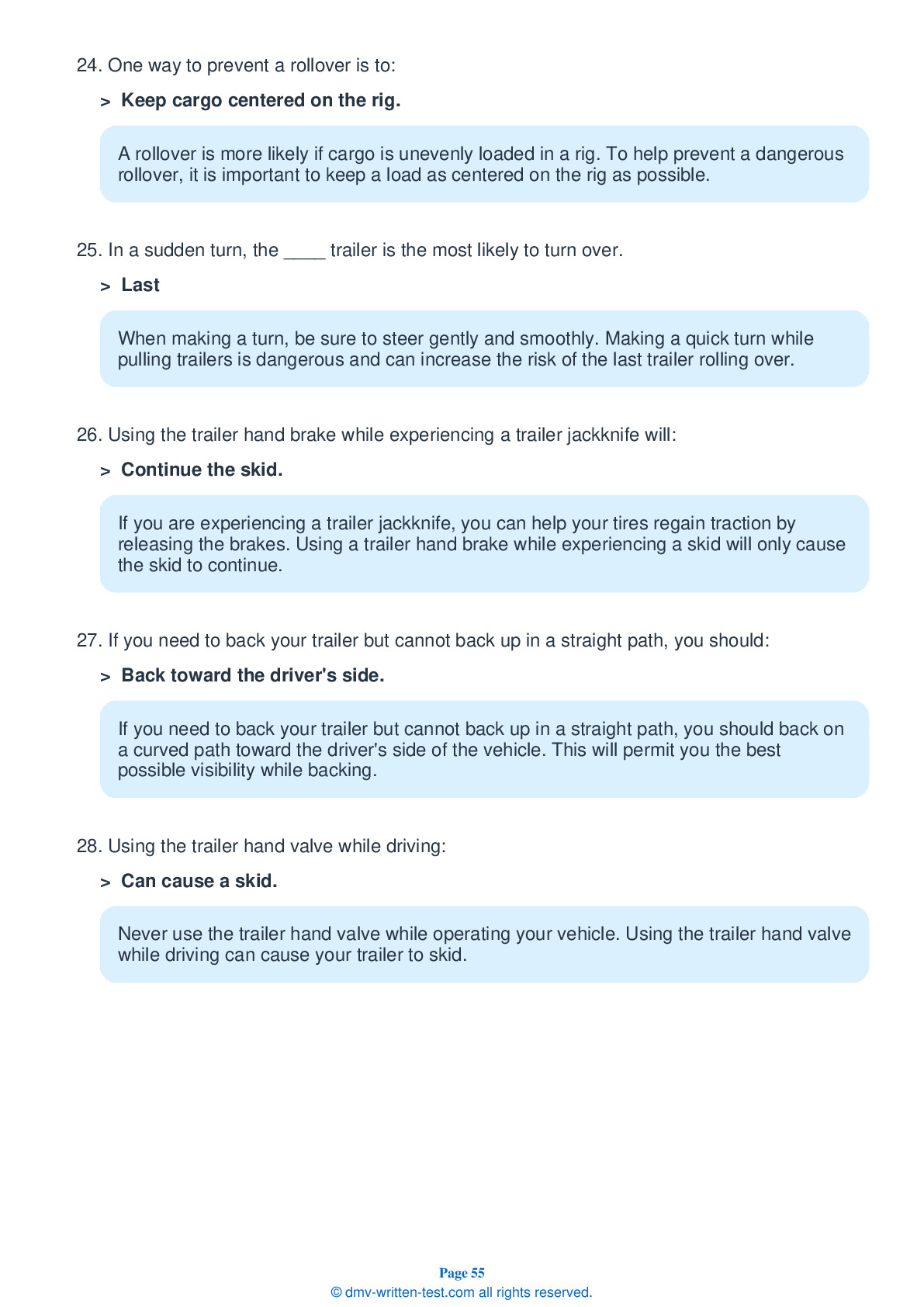Air Brakes
This endorsement is required for driving a vehicle with air brakes. To receive this endorsement, applicants must pass a written test. The test consists of 25 multiple choice questions. Each question has four answer choices. To pass, the applicant must answer at least 20 questions correctly. Test questions come from the New Hampshire CDL Driver’s Guide. Questions come from the chapter covering: Air Brakes. The Air Brakes endorsement may be used with the Class A, B or C CDL.
Number of Question
Passing Score
1. To stop in a vehicle that uses air brakes, the driver should:
Explanation
To make a normal stop in a vehicle with air brakes, push the brake pedal down. The harder the pedal is pressed, the more air pressure is released.
2. Air tank drains:
Explanation
Compressed air in an air brake system usually has a certain amount of water and oil in it. This can harm the system if allowed to accumulate. Air tanks have drain valves to aid in removing water and oil from the compressed air.
3. Brake fade is a result of:
Explanation
If brakes are overused, they can become too hot. This overheating causes them to fade, making them less effective at slowing the vehicle.
4. Air tank drains:
Explanation
In an air brake system, air tanks have drains to remove accumulations of water and compressor oil. Allowing water and oil to accumulate in the system could cause damage to the brakes. Manually operated drains should be used daily.
5. Brake linings should be:
Explanation
Brake linings should not be loose or soaked with oil or grease. They shouldn't be dangerously thin.
6. What helps prevent wheel lockup when braking?
Explanation




